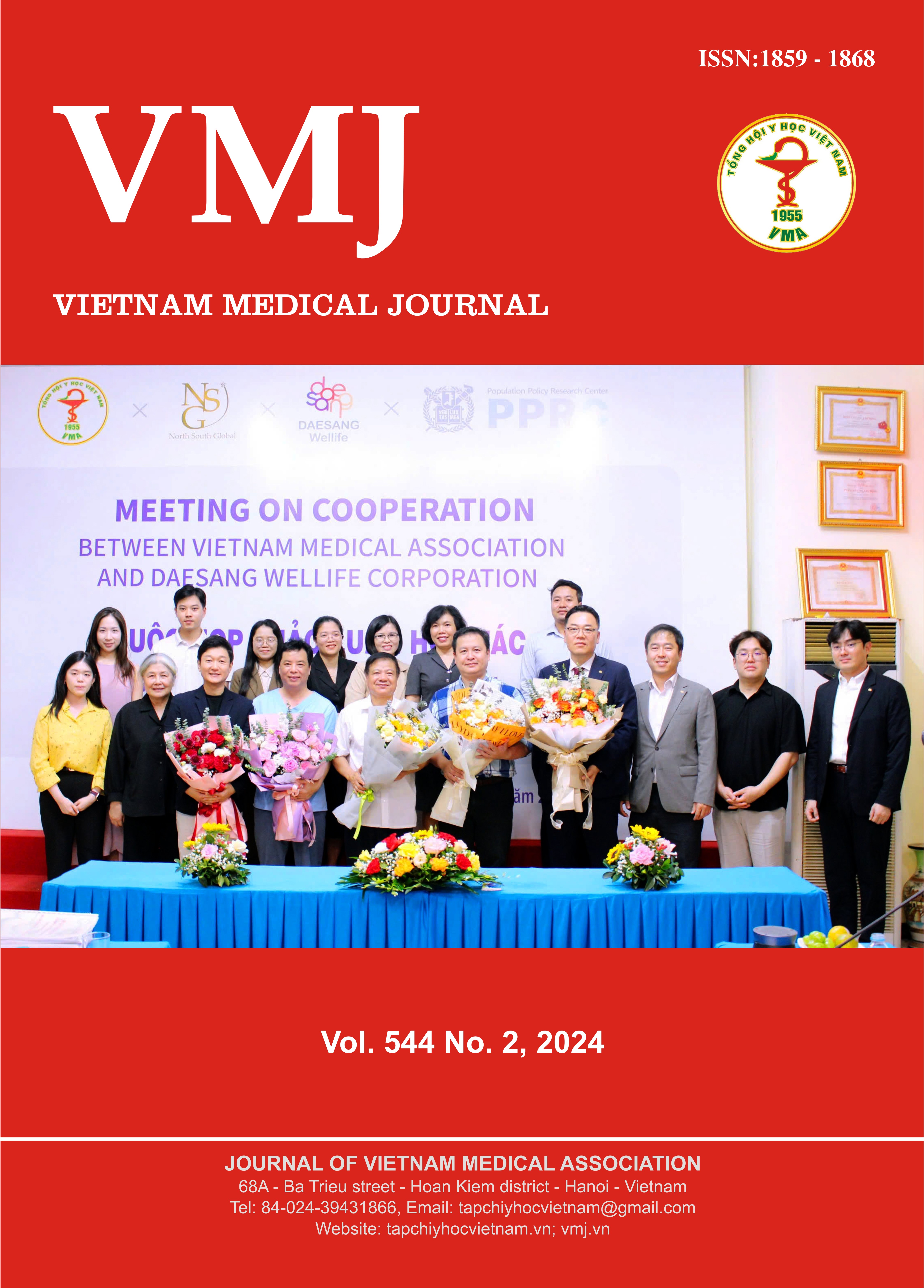EFFECT OF THE MOUTHWASH CONTAINING CHLORINE DIOXIDE AND CHLORHEXIDINE ON HYDROGEN SULFIDE GAS IN HALITOSIS TREATMENT
Nội dung chính của bài viết
Tóm tắt
Objectives: To evaluate the effectiveness of mouthwash that contains chlorhexidine and chlorine dioxide in neutralizing hydrogen sulfide gas. Methods: Hydrogen sulfide was prepared from sodium sulfide and sulfuric acid, and the amount of gas was calculated by the standard curve method. Evaluate the interaction between hydrogen sulfide gas (H2S) and chlorine dioxide (ClO2) and chlorhexidine (CHX) by letting the H2S gas through the flask containing ClO2 0.05%, 0.1%, and the mixture of ClO2 0.05% + CHX 0.01%, ClO2 0.1% + CHX 0.01%, and performing the UV-vis absorption spectra change of dye solutions. The results were compared to the one when H2S gas passed through water. Results: When the volume of H2S was 0.262 µmol, over 90% of H2S reacted with the mouthwash containing ClO2. As the ClO2 concentration increases, the amount of responding H2S also increases. The CHX + ClO2 mixture did not affect the capacity of H2S neutralization. Conclusion: Chlorine dioxide was a potential agent to reduce the oral unpleasant breath.
Chi tiết bài viết
Từ khóa
chlorine dioxide, halitosis, hydrogen sulfide, mouthwash, neutralization
Tài liệu tham khảo
2. Aylıkçı BU, & Çolak H. Halitosis: From diagnosis to management. Medknow. 2013; 4(1): 14-14. doi.org/10.4103/0976-9668.107255.
3. Csekö G, Pan C, Gao Q, Horváth AK. Kinetics of the Two-Stage Oxidation of Sulfide by Chlorine Dioxide. Inorg Chem. 2018; 57(16):10189-10198. doi: 10.1021/acs.inorgchem.8b01386.
4. Lee Y, Shin S, Hong J. Investigating volatile sulfur compound level and halitosis in patients with gingivitis and periodontitis. Scientific Reports. 2023; 13(1): 1-11. doi.org/10.1038/s41598-023-40391-3.
5. Lim E, Mbowe O, Lee AS, Davis J. Effect of environmental exposure to hydrogen sulfide on central nervous system and respiratory function: a systematic review of human studies. Int J Occup Environ Health. 2016; 22(1):80-90. doi: 10.1080/10773525.2016.1145881.
6. Lynch E, Sheerin A, Claxson AWD, Atherton MD, Rhodes CJ, Silwood CJL, et al. Multicomponent spectroscopic investigations of salivary antioxidant consumption by an oral rinse preparation containing the stable free radical species chlorine dioxide (ClO2). Free Radical Res. 1997; 26:209-234. doi:10.3109/10715769709097801.
7. Szalai E, Tajti P, Szabó B, Hegyi P, Czumbel LM, Shojazadeh S, et al. Daily use of chlorine dioxide effectively treats halitosis: A meta-analysis of randomised controlled trials. Public Library of Science, 2023, 18(1), e0280377-e0280377. https://doi.org/10.1371/journal.pone.0280377
8. Santos DSF, Peralta-Mamani M, Brandão FS, Andrade FB, Cruvinel T, Santos PSDS. Could polyhexanide and chlorine dioxide be used as an alternative to Chlorhexidine? A systematic review. Sao Paulo Med J, 2022, 140(1):42-55. doi: 10.1590/1516-3180.2020.0776.R1.18052021.


